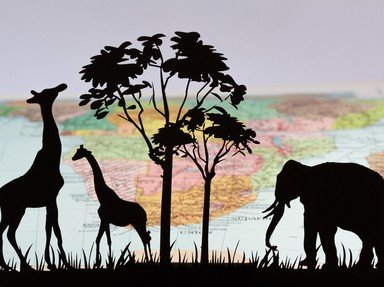Quiz Answer Key and Fun Facts
1. Is a jellyfish able to sting even when they are washed up on the beach and appear dead?
2. In colder climates, the ponds will freeze over in the winter. When hibernating at the bottom of their ponds during the winter, how do painted turtles survive?
3. What is the only cervid (deer) species in which females grow antlers as well as males?
4. Although zebras don't have an Arabic origin, the name of their groups does. What are these groups called?
5. How does the great blue heron locate its food?
6. What is the North American largest animal still living in the early twenty-first century?
7. What animal is this large carnivore named after?
8. What type of an eater is a chipmunk?
9. How many vertebrae are there in a giraffe's neck?
10. What is the red part on top of a rooster's head called?
Source: Author
Trivia_Fan54
This quiz was reviewed by FunTrivia editor
rossian before going online.
Any errors found in FunTrivia content are routinely corrected through our feedback system.

